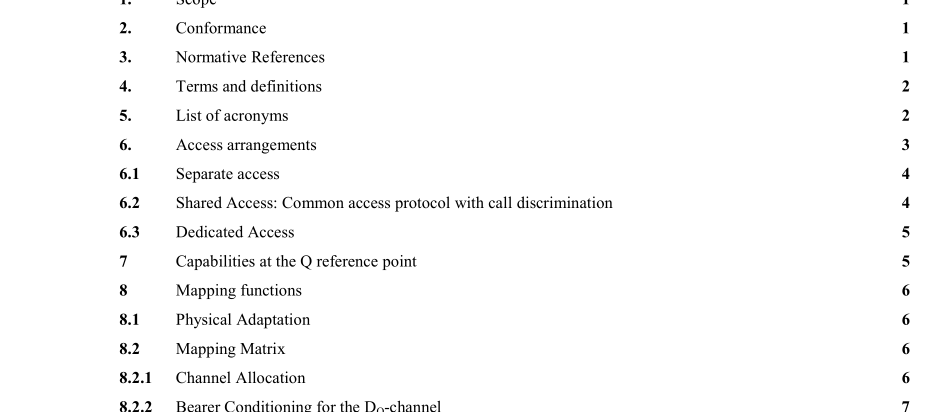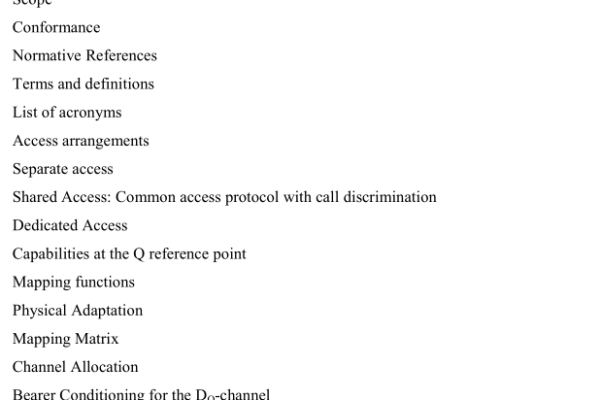ISO IEC 18017:2001 pdf download – Information technology — Telecommunications and information exchange between systems — Private Integrated Services Network — Mapping functions for the employment of Virtual Private Network scenarios.
4. Terms and definitions For the purpose of this International Standard the terms and definitions given in ETS 300 415 and the following apply. 4.1 α α reference point: boundary between the Inter-Connecting Network (ICN) and the public ISDN. NOTE – The ICN at this point provides gateway functions such as numbering, charging, management and routing. 4.2 channel: means of bi-directional transmission of user or signalling information between two points. 4.2.1 D Q -Channel: channel used to convey call control information between the Q reference points of two peer PINXs. 4.2.2 U Q -Channel: channel used to convey user information between the Q reference points of two peer PINXs. 4.3 Interconnecting Network (ICN): emulation of transit-PINX functionality by equipment that is physically part of the public network, includes one or more IVNs and may include the emulation of gateway-PTNX functionality. 4.4 inter-PINX connection: connection provided by an intervening network (IVN) between two C reference points used to transport inter-PINX information from the PISN control plane and/or the PISN user plane. 4.5 inter-PINX link: link between the Q reference points of two PINXs, comprising the totality of signalling transfer and user information transfer means. 4.6 T+ reference point: reference point between an Attached PINX and the ICN. NOTE – The interface at the T+ reference point supports private network calls (PISN) and it may also support public ISDN calls. 4.7 public network equipment: equipment of a public network provider, which is used to provide public network (ISDN) services and virtual private network (VPN) services. NOTE – The term is also used as a synonym to designate equipment of any other third party which is used to provide virtual private network (VPN) services only, and which may or may not provide access functions to a public network. 4.8 third party: generic term designating a (legal) body providing VPN services either in conjunction with or without public network services. NOTE – In the first case the third party is also known as a public network provider. 4.9 Virtual Private Network (VPN): private network transmission and switching functionality emulated by third party provided equipment. NOTE – The functionality provided by a VPN includes transit-PINX functionality and/or end-PINX functionality (i.e. it serves the originating or destination user). 4.10 VPN-PINX: that part of a third party provided switched network that provides transit-PINX functionality and/or end- PINX functionality. 4.11 attached PINX: PINX attaching to the VPN. In the context of a call, the attached PINX can be an end-PINX (i.e. serving the originating or destination user or acting as a gateway with another network) or it can be a transit- PINX.
ISO IEC 18017:2001 pdf download – Information technology — Telecommunications and information exchange between systems — Private Integrated Services Network — Mapping functions for the employment of Virtual Private Network scenarios






